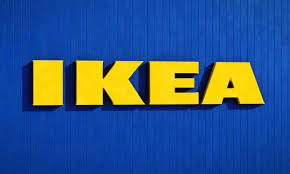
Inter IKEA, the global furniture giant and franchisor of IKEA, has reported increased profits for 2024, driven by strategic cost adjustments and global expansion, despite a decrease in revenue. The company’s profitability rose as a result of lowered interest payments and renewed consumer interest in affordable home furnishings, underscoring IKEA’s shift to attract budget-conscious customers worldwide.
Price Reductions Restore Affordability and Boost Sales
Following significant price hikes in 2021-2022 due to supply chain disruptions and soaring raw material costs, IKEA has now pivoted to make its products more affordable. In 2024, Inter IKEA reduced its prices by an average of 15% across popular items like BILLY bookcases. This price reduction allowed IKEA retailers to cut customer prices by an average of 10%, a move intended to make IKEA more competitive and appealing to cost-conscious shoppers. The strategy reflects IKEA’s broader goal of restoring prices to pre-COVID levels, adjusted for inflation, while aiming to further reduce prices in the coming year. Henrik Elm, IKEA’s Chief Financial Officer, explained that this pricing strategy has encouraged increased customer spending, even as revenue saw a temporary decline.
Revenue Dip Offset by Profit Increase
Although the price cuts reduced Inter IKEA’s revenue by 8.9%, bringing it down to 26.5 billion euros for the fiscal year ending in August, the company’s operating profit still rose. This year, IKEA achieved an operating profit of 2.3 billion euros, up from 2.2 billion euros in 2023, largely due to renewed consumer interest and higher transaction volumes. Furthermore, lower interest payments following the settlement of a major loan in 2023 significantly boosted net profit to 2.2 billion euros, marking a substantial increase from the previous year’s 1.6 billion euros.
IKEA’s price reduction strategy also affected its franchise fees, which comprise 3% of net sales collected from IKEA stores globally. However, the increased customer volume helped to offset the dip in revenues from wholesale sales to retailers, balancing IKEA’s financial performance. Elm noted that the new pricing approach has allowed the company to realign its product offerings with pre-pandemic pricing, making IKEA’s extensive range more accessible amid ongoing economic challenges.
Investment in Local Manufacturing: New Factories and Sustainability
As part of its commitment to increase local manufacturing and reduce dependency on external suppliers, IKEA has opened a new factory in Slovakia and expanded its production capabilities in Sweden. Currently, around 10% of IKEA’s products are made in its own factories, with the rest sourced from a network of global suppliers. By increasing in-house production, IKEA aims to enhance control over its supply chain and potentially reduce costs further. This strategy not only reinforces IKEA’s commitment to sustainability by reducing shipping distances and emissions but also strengthens its capacity to respond to global supply chain disruptions.
Expansion into the Baltic Market
IKEA’s 2024 plans also included a significant expansion into the Baltic states, with the acquisition of retail operations in Estonia, Lithuania, and Latvia from the current franchisee, Hof Group. Expected to close by December 2024, pending regulatory approvals, this acquisition aligns with IKEA’s mission to increase market reach and support its long-term growth goals. The purchase allows IKEA to directly manage operations in these emerging markets, providing more consistent branding and an opportunity to streamline pricing and product availability.
Balancing Affordability and Sustainability
With its price cuts, renewed focus on local manufacturing, and entry into new markets, IKEA’s approach for 2024 reflects a balance between affordability and sustainability. Elm emphasized that the company is committed to delivering value to consumers while continuing to make strides in environmental responsibility. For example, IKEA’s investment in renewable energy and the development of eco-friendly products is helping the brand maintain its position as a leader in affordable, sustainable home furnishings.
Navigating Future Economic Challenges
IKEA’s strategic moves in 2024 reflect a forward-looking approach that addresses both consumer needs and global economic uncertainties. Elm has indicated that further price adjustments may be on the horizon as the company continues its mission to make stylish, functional furniture affordable worldwide. By expanding its retail footprint and investing in manufacturing, IKEA is positioning itself to withstand fluctuations in the global economy and to remain a trusted, accessible brand for consumers in both established and emerging markets.
Overall, Inter IKEA’s successful combination of reduced prices, streamlined operations, and global expansion demonstrates its commitment to affordability, sustainability, and resilience in an increasingly competitive retail landscape.
(Surce:www.usnews.com)
Price Reductions Restore Affordability and Boost Sales
Following significant price hikes in 2021-2022 due to supply chain disruptions and soaring raw material costs, IKEA has now pivoted to make its products more affordable. In 2024, Inter IKEA reduced its prices by an average of 15% across popular items like BILLY bookcases. This price reduction allowed IKEA retailers to cut customer prices by an average of 10%, a move intended to make IKEA more competitive and appealing to cost-conscious shoppers. The strategy reflects IKEA’s broader goal of restoring prices to pre-COVID levels, adjusted for inflation, while aiming to further reduce prices in the coming year. Henrik Elm, IKEA’s Chief Financial Officer, explained that this pricing strategy has encouraged increased customer spending, even as revenue saw a temporary decline.
Revenue Dip Offset by Profit Increase
Although the price cuts reduced Inter IKEA’s revenue by 8.9%, bringing it down to 26.5 billion euros for the fiscal year ending in August, the company’s operating profit still rose. This year, IKEA achieved an operating profit of 2.3 billion euros, up from 2.2 billion euros in 2023, largely due to renewed consumer interest and higher transaction volumes. Furthermore, lower interest payments following the settlement of a major loan in 2023 significantly boosted net profit to 2.2 billion euros, marking a substantial increase from the previous year’s 1.6 billion euros.
IKEA’s price reduction strategy also affected its franchise fees, which comprise 3% of net sales collected from IKEA stores globally. However, the increased customer volume helped to offset the dip in revenues from wholesale sales to retailers, balancing IKEA’s financial performance. Elm noted that the new pricing approach has allowed the company to realign its product offerings with pre-pandemic pricing, making IKEA’s extensive range more accessible amid ongoing economic challenges.
Investment in Local Manufacturing: New Factories and Sustainability
As part of its commitment to increase local manufacturing and reduce dependency on external suppliers, IKEA has opened a new factory in Slovakia and expanded its production capabilities in Sweden. Currently, around 10% of IKEA’s products are made in its own factories, with the rest sourced from a network of global suppliers. By increasing in-house production, IKEA aims to enhance control over its supply chain and potentially reduce costs further. This strategy not only reinforces IKEA’s commitment to sustainability by reducing shipping distances and emissions but also strengthens its capacity to respond to global supply chain disruptions.
Expansion into the Baltic Market
IKEA’s 2024 plans also included a significant expansion into the Baltic states, with the acquisition of retail operations in Estonia, Lithuania, and Latvia from the current franchisee, Hof Group. Expected to close by December 2024, pending regulatory approvals, this acquisition aligns with IKEA’s mission to increase market reach and support its long-term growth goals. The purchase allows IKEA to directly manage operations in these emerging markets, providing more consistent branding and an opportunity to streamline pricing and product availability.
Balancing Affordability and Sustainability
With its price cuts, renewed focus on local manufacturing, and entry into new markets, IKEA’s approach for 2024 reflects a balance between affordability and sustainability. Elm emphasized that the company is committed to delivering value to consumers while continuing to make strides in environmental responsibility. For example, IKEA’s investment in renewable energy and the development of eco-friendly products is helping the brand maintain its position as a leader in affordable, sustainable home furnishings.
Navigating Future Economic Challenges
IKEA’s strategic moves in 2024 reflect a forward-looking approach that addresses both consumer needs and global economic uncertainties. Elm has indicated that further price adjustments may be on the horizon as the company continues its mission to make stylish, functional furniture affordable worldwide. By expanding its retail footprint and investing in manufacturing, IKEA is positioning itself to withstand fluctuations in the global economy and to remain a trusted, accessible brand for consumers in both established and emerging markets.
Overall, Inter IKEA’s successful combination of reduced prices, streamlined operations, and global expansion demonstrates its commitment to affordability, sustainability, and resilience in an increasingly competitive retail landscape.
(Surce:www.usnews.com)














